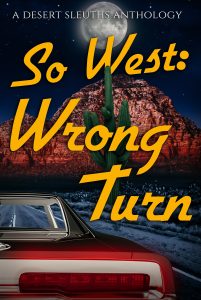The Weight of Silence by Heather Gudenkauf is next up on our 100 Bestsellers List reading challenge. Gudenkauf’s novel hooked me from the first page of the Prologue, where young Calli appears out of the woods and speaks for the first time in three years. Why is there a deputy sheriff on the scene? What happened in the woods that caused Calli to speak? What did she say? And why did she quit speaking in the first place? Who is Petra and why does her father crumble to the ground when Calli speaks? So many questions to be answered!
This post does contain spoilers.
The Weight of Silence by Heather Gudenkauf
(*Amazon Affiliate link)
Clear Your Calendar
Don’t plan on getting anything else done when you pick up this book. I stayed up way too late two nights in a row to finish this book. Several times I put it down to try to sleep and lay there thinking about the characters, wondering what was going to happen next, and then ended up picking it back up to read more. By presenting the story from the viewpoint of different characters, the plot line moves along quickly and the suspense builds throughout. Several character options are presented as the possible bad guy and since each are plausible, you really cannot guess who “did it” until the very end.
Silence
At first it seems apparent that the word “silence” in the title refers to Calli Clark, who has been a selective mute for the past 3 years. Calli’s silence is only the most obvious. Several other characters employ various modes of silence in order to cope with untenable situations. Calli’s mother Antonia creates in her mind alternate versions of the episodes of abuse she suffers at the hands of her husband, Griff, hiding from herself how truly bad her family situation is. Sheriff Lewis kept silent years ago when Antonia told him that she was marrying Griff, when he knew he should have spoken up and tried to prevent that marriage, and he continues to subsume his love for Antonia, to the detriment of his own marriage.
Difficult Topics
The Weight of Silence deals with some very uncomfortable topics – alcoholism, spousal abuse, kidnapping, child sexual assault – so if these topics are not something you can handle, then you should skip this book. That said, Gudenkauf handles these difficult and uncomfortable topics in a very tasteful manner, if that’s possible. Certain subjects are carefully alluded to without being graphic or gory.
Author Heather Gudenkauf hit a home run the first time out with her debut suspense novel. I’ve recommended my local public library acquire all of her novels and look forward to reading them soon.
Disclaimer: I had so very much more to say about this excellent book, but have been sick since Thanksgiving Day and my fuzzy brain isn’t working on all cylinders. My apologies for an abbreviated review.
Related posts:
- Book-beginnings, a discussion of the first line of the novel
- Karen’s review from a reader’s perspective
- Roberta’s review from a writer’s perspective
You can also join us on social media:
- The Bestseller Code 100 Pinterest Page
- Twitter: #BestsellerCode100
- Facebook: Bestseller Code 100 Reading Group
- The full list is now posted on GoodReads
Do you have suggestions for ways to improve this reading challenge? We’d love to hear them.
Have you written about The Weight of Silence by Heather Gudenkauf? Feel free to add a link to your review to the comments.
__________________
What are we reading next?
If you ever have questions about what we are reading next or when we’re starting the next discussion, check the 100 Book List tab in the navigation bar at the top of the blog. Links in the list go to the landing page from this blog where the discussion starts. However, this is an open-ended challenge so feel free to jump in with any of the books at any time.
The next book is number 72. The Marriage Bargain by Jennifer Probst (2012) – Discussion begins November 27, 2017
Romance
















